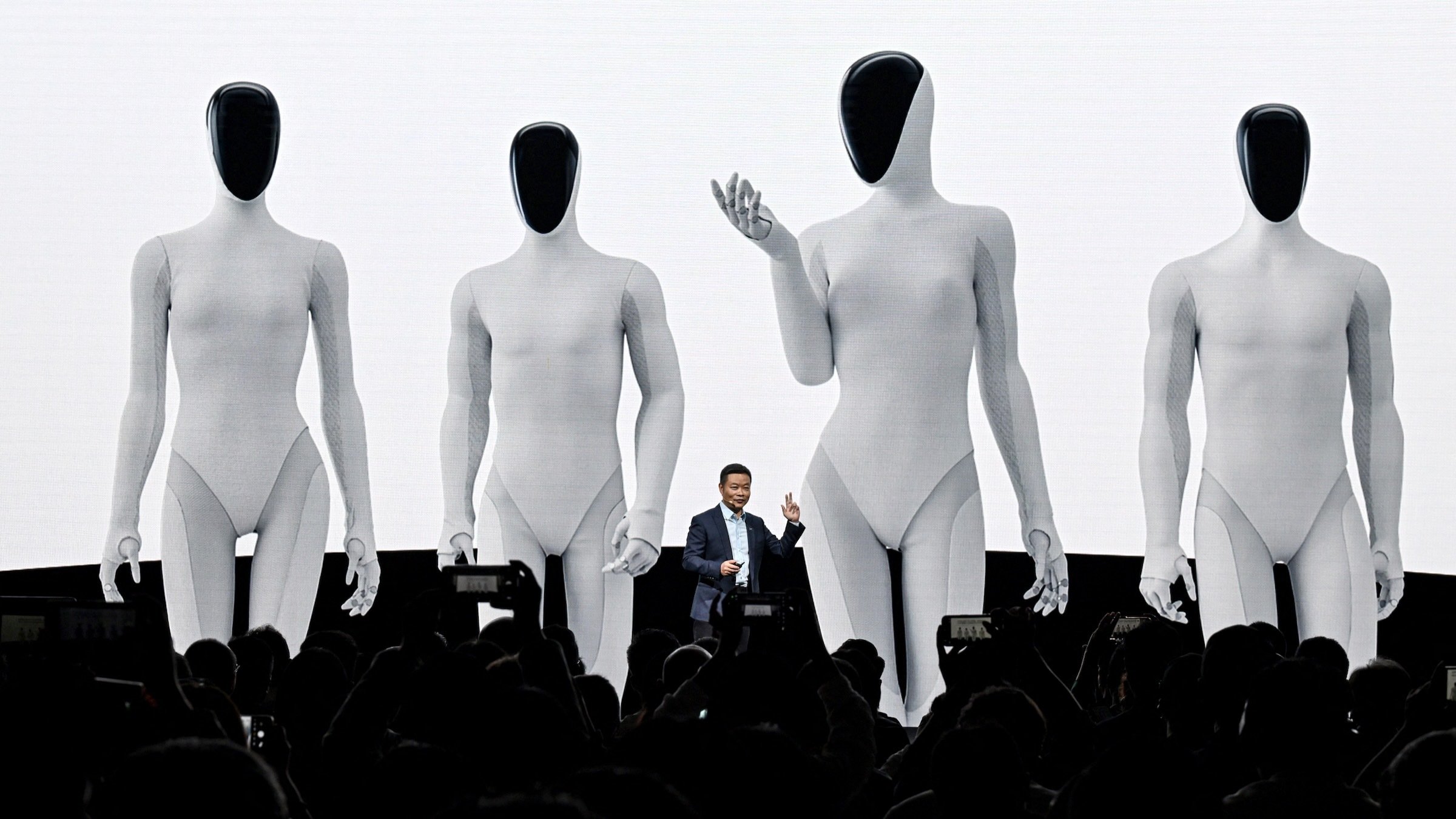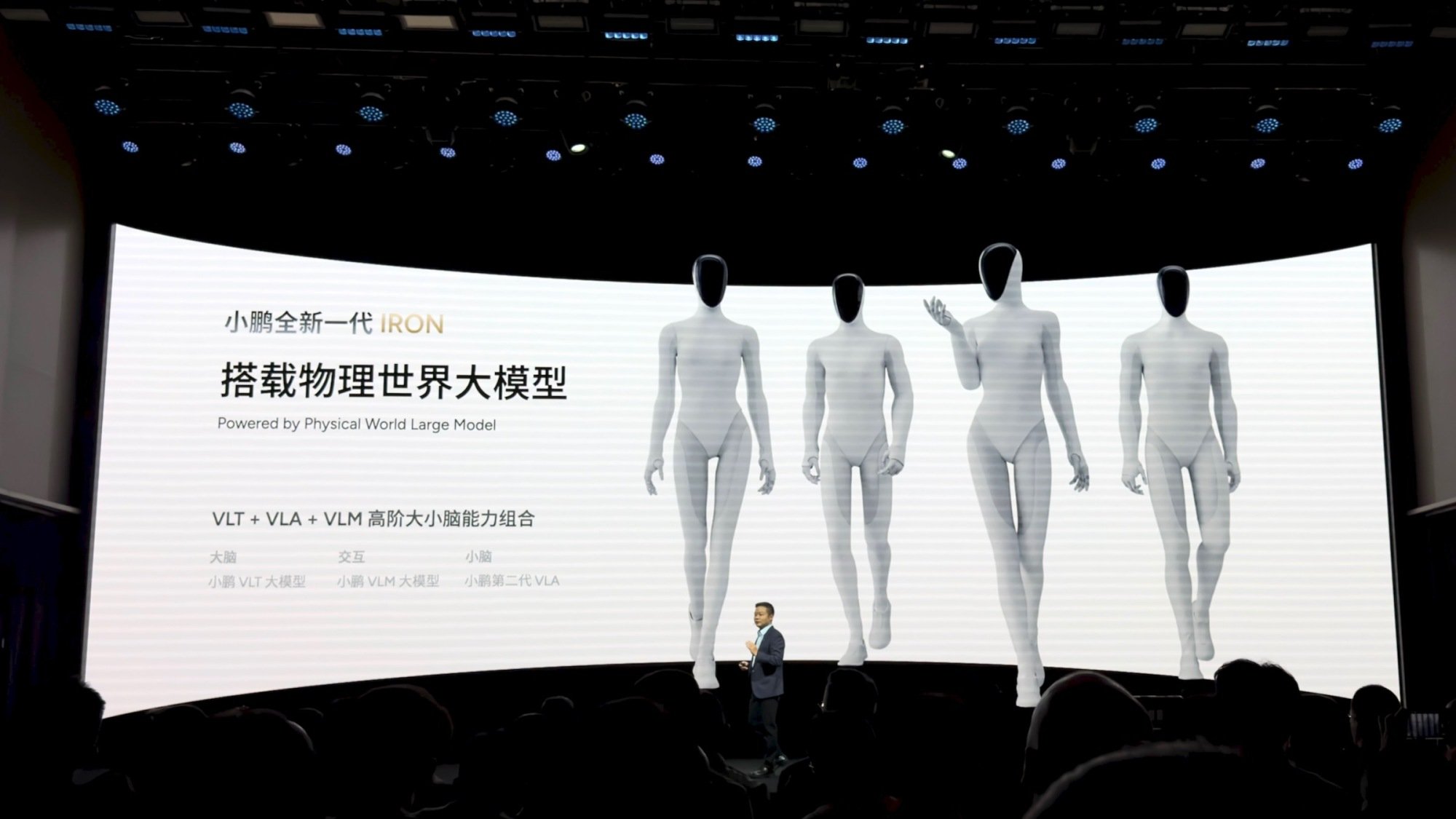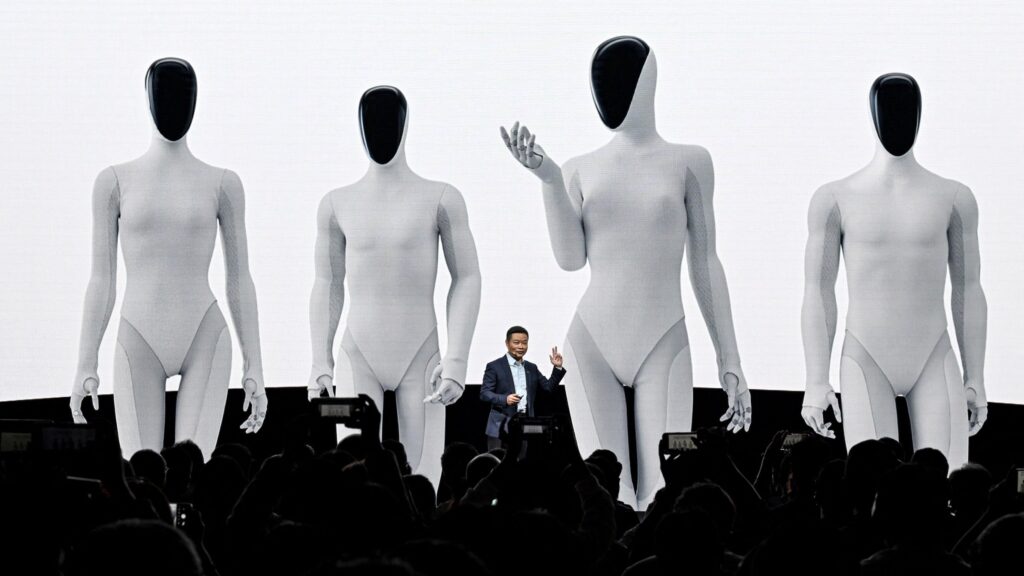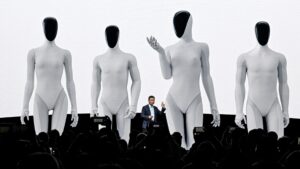
Xpeng, a Chinese electric vehicle company, stunned social media with the introduction of its new humanoid robot, Iron. The robot seemed so lifelike that Xpeng eventually cut the robot open live on stage to prove it wasn’t just a human wearing a robot suit.
Mashable reporter Amanda Yeo was in the audience at the AI Day event in Guangzhou, where Iron made its big debut, and we’ll have more coverage of the event coming soon. Already, video footage of Iron is going viral on U.S. and Chinese social media apps.
This Tweet is currently unavailable. It might be loading or has been removed.
You can also watch the entire press conference where Iron had its electronic innards exposed to the world on Xpeng’s YouTube channel.
Iron does cut a striking figure walking across the stage, and not just because Xpeng decided to give the robot very noticeable breasts, for some reason. For me, its slow, awkward movements instantly evoked Scarlett Johansson in the 2013 sci-fi thriller Under the Skin. (OpenAI was accused of appropriating Johansson’s likeness for the original voice of ChatGPT.) Ex Machina also comes to mind, and Iron’s white webbing closely mimics the design of the robots in Westworld. There’s also the famous scene from Terminator 2, where Arnold Schwarzenegger cuts open his human shell to reveal the robot arm underneath.
Science fiction continues to shape the development and perception of robotics. Human beings, with our awkward bipedal shape, are actually a terrible blueprint for robots, yet engineers keep creating new humanoid robots. We just can’t help but create beings in our own image, apparently.
In 2014, Popular Science wrote that humanoid robots were a bumbling mess, and that remains true today, with these humanoid robots still struggling with simple tasks like walking or folding laundry.

Credit: Amanda Yeo / Mashable
Iron is hardly the first humanoid robot to go viral. Just this year, Tesla’s Optimus, Boston Dynamics’ Atlas, and the recently announced NEO household helper bot from X1 all had their 15 minutes of fame.
There’s just something about anthropomorphized robots that captures our attention, and scientists are still studying how the human mind responds to humanoid robots. Maybe it’s the uncanny valley effect. Maybe it’s the feeling that we’re peering into the future. Maybe it’s a neurological reaction we don’t yet understand.
Whatever the reason, we’re simultaneously fascinated and creeped out by robots like Iron, and for companies like Xpeng trying to go viral and get attention, these bots are a sure-fire way to generate headlines.
We just can’t look away.







